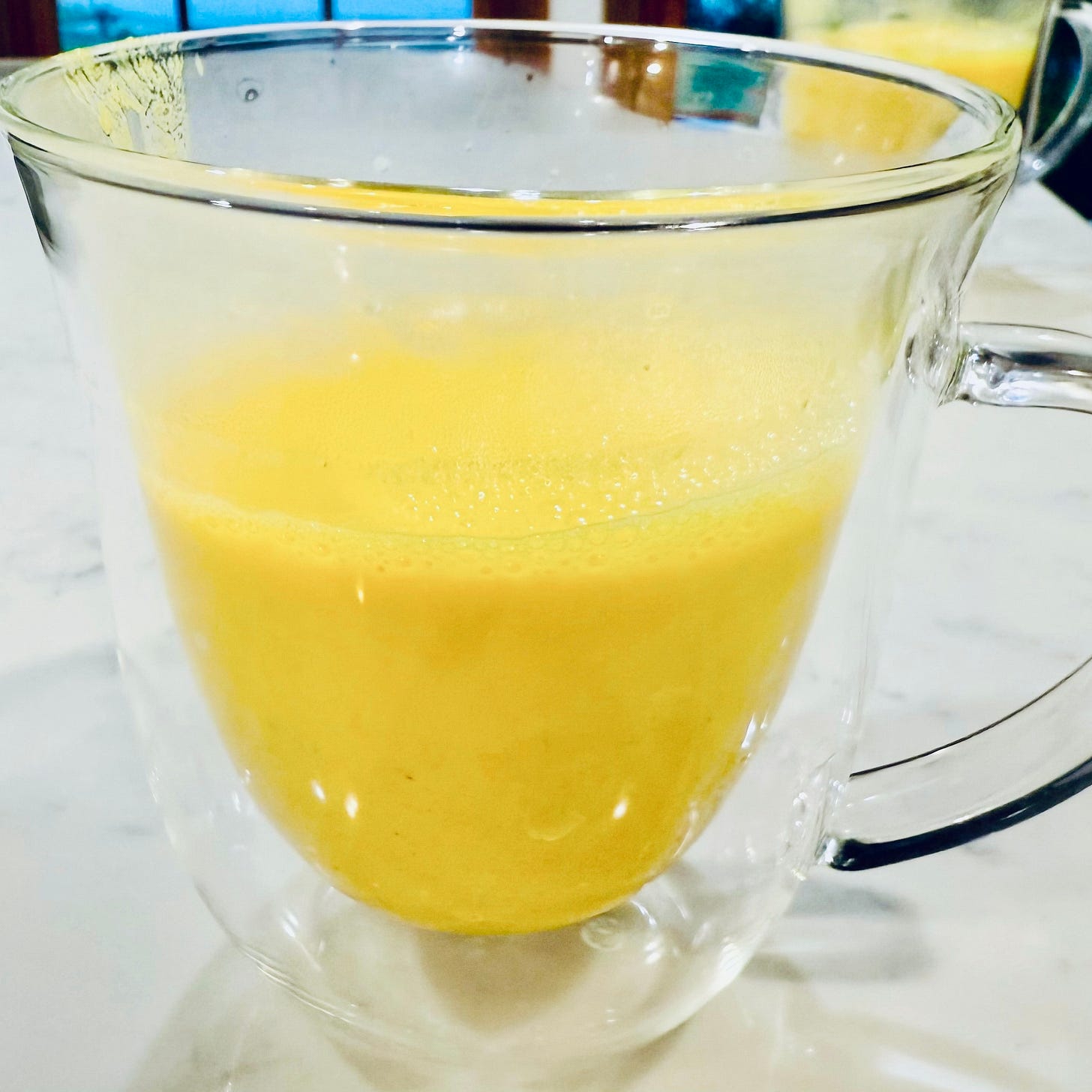Health Nugget—Turmeric
My mom always swore by the benefits of Turmeric. Of course, growing up I thought it was just one of my mom’s home-grown remedies to cure whatever was ailing my sister or me (she had many and most worked.). Recently, the science has borne out what my mom always knew. Turmeric has many great healing properties. If you read yesterday’s post on inflammation, you saw that turmeric is anti-inflammatory. But the benefits don’t stop there.
The active ingredient in turmeric is a polyphenol called curcumin. Mary-Eve Brown, an oncology clinical dietitian/nutritionist at Johns Hopkins Medicine, points out that curcumin has both antioxidant and anti-inflammatory properties and helps with ailments ranging from arthritis and joint disorders to “colitis, allergies, and infections.”1
“Turmeric has [also] been shown to be one of the best foods to maintain, protect, and boost immunity, reducing the risk of falling ill. Turmeric has antiviral, antibacterial and antimicrobial properties.”2
It has also been shown to reduce the risk of cardiovascular disease and improve brain function.3
Of the components of turmeric, curcumin has been shown to have the most benefits, but most turmeric preparations only have between 2 and 8 % curcumin.4 So does turmeric as a whole really benefit you?
Yes. Turmeric contains other plant compounds that also support your health. “A study that looked at the antifungal activity of turmeric found that all eight of its components, including curcumin, were able to inhibit fungal growth. The study also showed that curdione in turmeric had the best inhibitory effect. However, when combined with the seven other components, its fungal growth inhibition was even stronger.”5
So what should you do with turmeric? Well, there are many options. First, add it to your regular go-to cooking spices—cook Indian to make it easy!
You can also make Ginger/Turmeric Shots like my wife does—her recipe is below. Those are easy to take first thing in the morning—make a week’s worth on Sunday. Or you can make Golden Milk (which both my wife and mom do-recipes below). We like Golden Milk in the evening after dinner.
But these alone might not get you the amount of curcumin you want in your diet. Thus, many people recommend taking a curcumin supplement. If you are going to take a supplement, I recommend you research before choosing one. A Healthline article indicates many supplements contain fillers, food colors, and even lead.6 When you do your research look for one that is third-party tested by a trustworthy organization. (I hope to do some research on reputable third-party organizations and post them in the future.)
This is from arthritis.org: “Experts say to stick with curcumin supplements, preferably the high-quality extracts used in clinical trials, which contain up to 95% curcumin. Look for brands using black pepper (piperine), phospholipids (Meriva, BCM-95) antioxidants (CurcuWIN) or nanoparticles (Theracurmin) for better bioavailability. Curcumin is hard for your body to absorb; only about 2 to 3% may end up in your bloodstream. To increase absorption even more, take curcumin with a meal where you consume some fat. Experts recommend 500 mg of high-quality curcumin twice a day for both OA [Osteoarthritis] and RA [Rheumatoid Arthritis]. . . Be sure any curcumin supplement you take has been independently tested for authenticity and toxic metals by a third party, such as ConsumerLab.”7 (They have some recommended supplements on the website).
Finally, as always, it is best to consult a medical professional before adding any supplements—especially if you are taking other medications.8 And, if you take a supplement, make sure you are taking the right dose for you.
Kim’s Kitchen: Where Flavor Meets Passion
Golden Milk
Ingredients
2 1/2 cups milk-use the milk you like best (Kim uses Almond Milk—we use one that is just almonds and water and sea salt—watch out for emulsifiers and other additives/natural flavors)
3/4 -1 teaspoon ground or fresh turmeric (Kim likes to use Fresh Turmeric and ground it or cut it into small pieces/slices)
4 green cardamom pods slightly crushed
1 inch ginger cut into thin slices
5-6 whole black peppercorns
1 inch cinnamon stick
Kim adds a squirt of local honey.
(My Mom has been making it for years and hers is very simple but still very tasty. She uses fresh Turmeric, Milk, and Pepper)
Whisk it together and bring to a simmer until it is all warm (5 to 7 minutes). Kim then covers it and lets it rest. After that, if we wait a while, we might warm it before drinking. We strain it and pour it into our cups. Delicious and healthy!
Ginger/Turmeric Shots
1/2 cup fresh turmeric sliced
1 finger length fresh ginger root sliced thin (Kim leaves skin on)
4 cups coconut water (you can use whatever water you want but coconut water hydrates)
Blend 1 minute and pour into a pot
Simmer in pot for 10-15 minutes
While simmering, add some cayenne or black pepper (Kim likes cayenne)
Squeeze in the juice of a lemon when done and add some honey to give it a little sweetness (Kim uses a local honey)
She then puts it in little jars she bought and we drink one every morning before breakfast. The cayenne gives it a kick! This health.com article gives seven reasons to drink a ginger/turmeric shot every day (including helping with inflammation and pain and strengthening your immunity).
You can always modify either recipe to suit your tastes.
https://www.hopkinsmedicine.org/health/wellness-and-prevention/turmeric-benefits#:~:text=Science%20Behind%20Turmeric,Kidney%20health
https://www.news-medical.net/health/Health-Benefits-of-Turmeric.aspx#
Id.
https://pubmed.ncbi.nlm.nih.gov/23339049/
https://www.healthline.com/nutrition/turmeric-vs-curcumin#turmeric; https://pmc.ncbi.nlm.nih.gov/articles/PMC5854386/
https://www.healthline.com/nutrition/turmeric-side-effects#turmeric-side-effects
https://www.arthritis.org/health-wellness/healthy-living/nutrition/anti-inflammatory/turmeric-wont-help-arthritis#
https://www.healthline.com/nutrition/turmeric-side-effects#curcumin-side-effects





